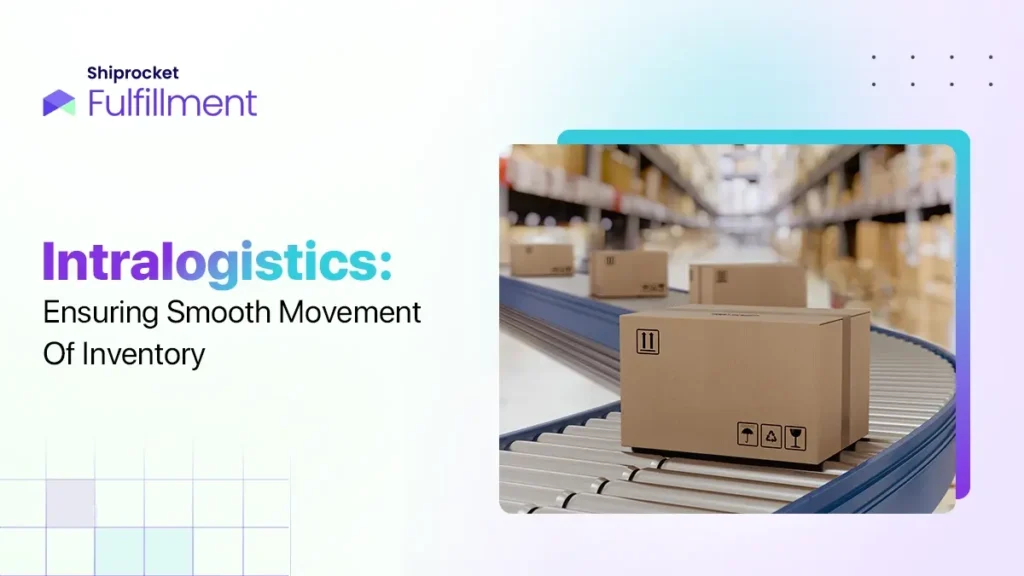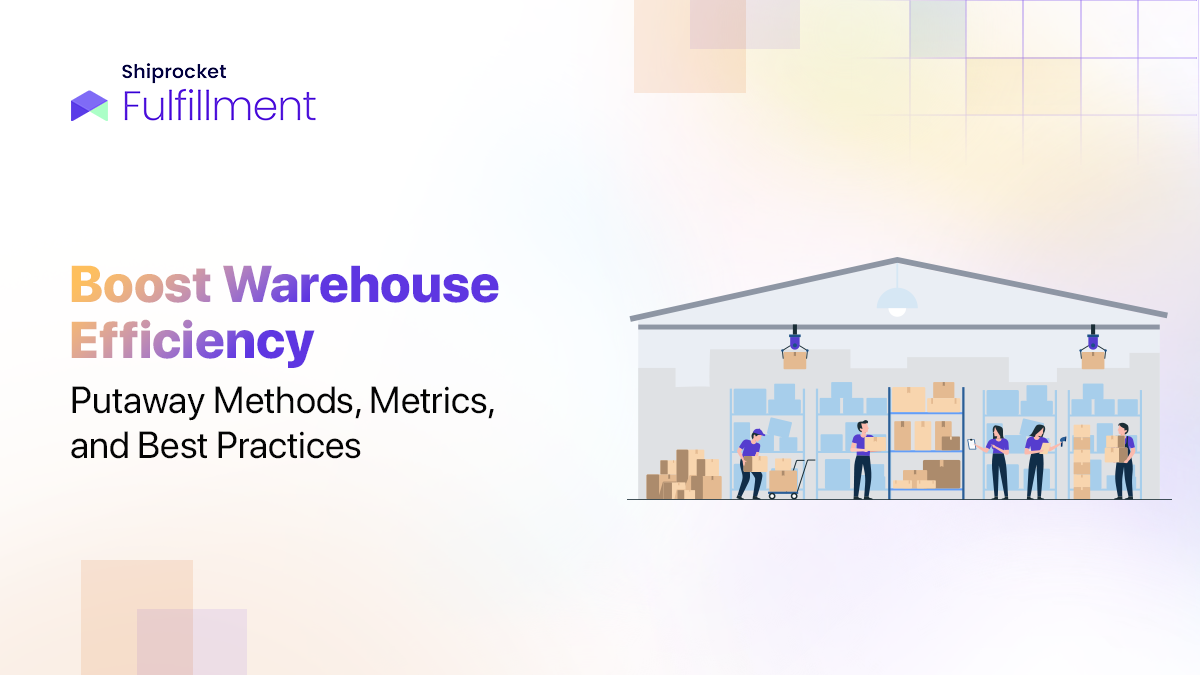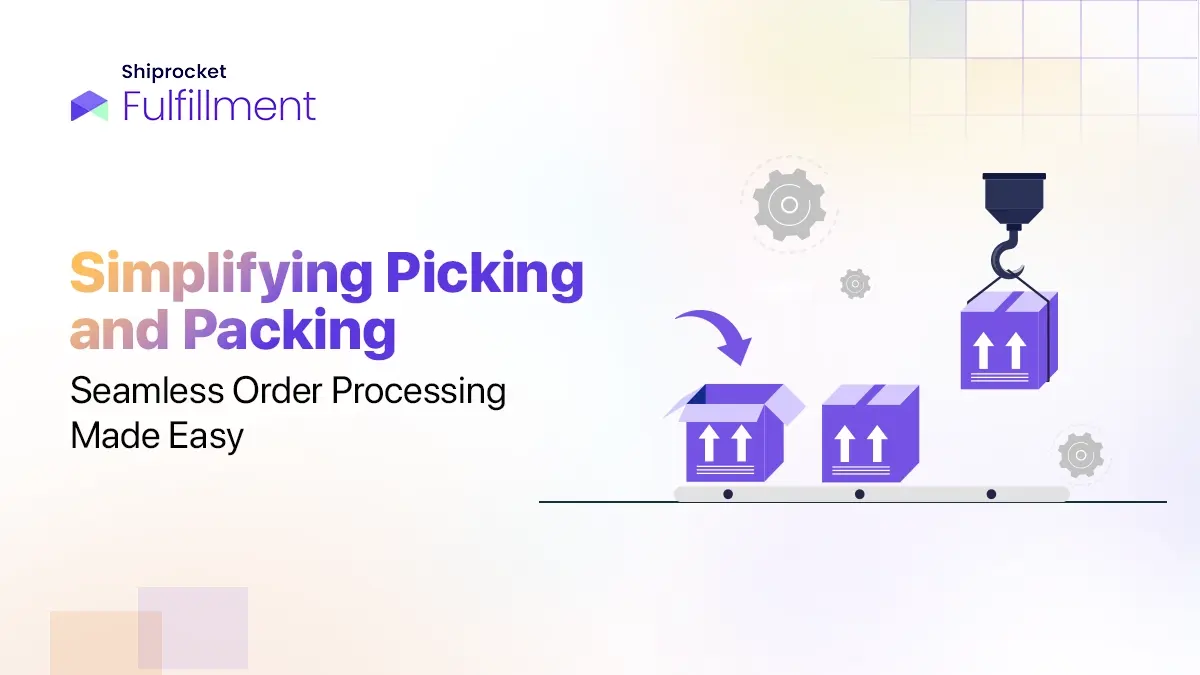The movement of products and services from the site of production to the site of consumption is referred to as logistics. While logistics and intralogistics are related, the latter is a considerably larger term.
Handling the complex order fulfillment operations on such a large scale would be extremely difficult without adequate procedures. Order fulfillment, order processing, and warehouse welcoming are just a few of the many duties that necessitate teamwork. Any interruptions in these procedures might result in lost inventory, higher expenses, and order delays. Intralogistics is organising all of these components to work together within a facility.

The value of the global intralogistics market in 2023 was USD 43.13 billion. It is predicted to reach a worth of USD 115.62 billion by 2030, growing at a CAGR of 15.2% from 2024 to 2030.
Now that you have an idea of intralogistics, let’s examine its definition, workings, and potential benefits for firms looking to outperform their rivals.
Defining the Term Intralogistics
Intralogistics is how a company manages and controls the movement of goods and materials within its warehouse or factory. It’s like the behind-the-scenes work that happens to make sure everything runs smoothly.
Consider it as arranging and streamlining every aspect of a business, from when raw materials are received until the completed goods are prepared for distribution. The goal of intralogistics is to guarantee that materials arrive are kept and efficiently distributed to clients.
The way businesses manage intralogistics has evolved significantly over time. Although it was once primarily physical labour, managing contemporary warehouses today requires technology. Automation and software are responsible for this accelerated and organised processes. This transition gives managers a clearer picture of what’s happening in the supply chain and helps organisations handle inventories and consumer needs.
Elements and Processes Augmenting Intralogistics System
The key backroom operation you can use in your company to help with property management is called intralogistics. Let’s say your company has many sites, such as factories or warehouses. The efficient transportation of commodities between these warehouses and locations is handled by the intralogistics process employed by your company.
There are three primary elements to intralogistics:
- Internal Material Flow: This makes sure that goods move smoothly within one location or across multiple locations that your company operates. It ensures that goods are transported seamlessly between manufacturing facilities and storage spaces.
- Information Tracking: Businesses need to be aware of what they own and where it is. Accurate information flow may help achieve this. For example, by making sure staff members have simple access to the data they need to perform their jobs well, you can track the warehouse functions.
- Warehouse Management: This keeps your warehouse operating properly, from acquiring new products and processing orders to delivering products. The simplest way intralogistics achieves this is by implementing robots, AI, and machinery.
How Intralogistics Support Contemporary Businesses?
Here’s how intralogistics support contemporary businesses:
- Fast Deliveries: They ensure your order gets to your customers faster by reducing the time between ordering and shipment. This is achieved by optimising warehouse operations.
- Customised Orders: Intralogistics solutions help brands meet their packaging needs. Their unique packaging and gift wrapping are only two ways they add their personal touch to the purchases.
- Managing a Large Number of Orders: These systems are made to expand with the company, so they maintain error-free operations even in the face of a large number of orders.
- Saving Money with Automation: They reduce the amount of human labour required by using robots and astute planning. In the long term, this implies fewer errors and greater savings for the brand.
- Accurate Order Processing: With advanced technology like AI tracking, and automatic sorting, you can decrease the chances of processing the wrong order.
- Efficient Inventory Management: By using intralogistics, brands can keep their inventory at the optimal level so everything functions smoothly for them.
- Storing Things on a Budget: Intralogistics ensures that by streamlining warehouse processes, fewer hours are lost. This expedites the delivery of your products into the market, decreases costs, and minimises waste.
- Increasing Warehouse Flexibility: Automation technology isn’t only about having machines; it’s also about fostering flexibility. Everything from filling orders to loading vehicles may be automated. As a result, the brand’s operations are enhanced, and income rises.
How Intralogistics Improve Warehouse Efficiency?
Consider a warehouse where workers are running up and down aisles, manually checking lists, and spending a lot of time on each order. Human error can occur in various ways, including misplacing objects, among many others. These errors and accidents can be decreased with the use of intralogistics. Employing technology and smart techniques turns an unorganised warehouse into one that is well-organised.
Conveyor belts, software, and other devices are used in intralogistics. These instruments significantly increase the efficiency of the warehouse. Intralogistics improves operational efficiency by lowering labour expenses and human error. It also reduces the time and effort needed to manage things.
How Intralogistics Help Businesses Get Ahead of the Competition?
The number of people employed in the eCommerce sector is increasing constantly. To stay ahead of your rivals, you must perform faster and more effectively. Here’s when intralogistics can come in handy. Similar to highly reliable support, intralogistics can manage every aspect of operating your warehouse, from receiving raw materials to moving them out.
How intralogistics may help you beat your rivals:
- Improved Delivery Time: With the aid of an intralogistics system you can shorten your delivery period by tracking your items’ movement in real-time. This helps you locate them precisely, solve any issues that are holding up the cargo, and expedite ultimate delivery.
- Reducing Costs: By using data to enhance warehouses, intralogistics lets your company automate several labour-intensive processes that may help you save money on labour and storage space.
- Customer Satisfaction: When you provide things accurately and on schedule, your consumers are pleased. Deliveries on time can be facilitated via intralogistics.
- Improved Security: Intralogistics may increase worker safety in your warehouse by automating risky jobs like heavy box hauling.
Shiprocket Solutions for Intralogistics
Are you having difficulty with B2B fulfillment and slow deliveries? Shiprocket is here to help! Your one-stop shop for efficient intralogistics that increases productivity and customer happiness is Shiprocket Fulfillment.
It offers a network of more than 42 strategically placed fulfillment hubs throughout India, allowing for lightning-fast customer delivery of your products. You can effortlessly maintain control, handle orders, monitor inventory, and assess performance with just one management system. By spanning more than 24,000 pin codes, it promotes company expansion and attracts new customers throughout India.
Conclusion
In the present competitive market, corporate growth is contingent upon the optimisation of internal processes. Intralogistics is used in this situation. It involves the efficient movement of resources and commodities between production and storage sites, directly impacting several aspects of the company. The growth of online commerce has made intralogistics even more sophisticated. Computers, artificial intelligence, and supercharged robots all employ cognitive processes and data processing to improve performance. They help you determine how best to set up your warehouse, handle your stock, and swiftly pack and ship orders.
Investing in efficient intralogistics is similar to giving your company advanced abilities. Consequently, your business becomes more efficient and able to serve your customers.
Logistics is the efficient movement of goods from one place to another, and intralogistics is a far more expansive version of the same idea. Logistics is an end-to-end process. Intralogistics is the process of moving things around within a facility.
Businesses, including small to medium-sized brands, may benefit from intralogistics. For small organisations, efficiency and productivity may be greatly impacted by even slight organisational changes and automation.
These trends include:
The continued adoption of automation
The integration of artificial intelligence for predictive analytics
The use of IoT for real-time monitoring
The development of sustainable and eco-friendly logistics practices





